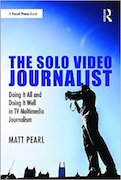I click the play button to log an interview I just recorded. I hear a nurse in New York describe a sight from a recent shift.
“I remember I was sitting at my desk,” she tells me, “and the body rolled by on the stretcher to go to the morgue. And I’m thinking, ‘That’s just joining all the other bodies down there.’”
As my fingers type fast to keep up, a voice in the background interrupts.
“SEE YOU SOON, HOPSIEEEEEEEEE!”
That’s my daughter. She’s two years old. She’s in her playpen, one room over from my office. And she’s putting her toy bear, Hopsie, down for a nap.
For the next few minutes, her high-pitched squeals pierce the sentences and sighs of an exhausted nurse: “They have a tent outside the hospital where they take all the dead bodies” – I LOVE YOU, HOPSIEEEEEEE! – “They don’t have enough room in the morgue” – SEE YOU SOOOOOOON! – “It’s not normal for people to be dropping like flies like that.”
It’s certainly not normal. It’s also not normal for me to process upsetting details of a pandemic – and internalize them enough to write a story – while hearing my toddler blissful in the living room. It’s not normal to keep my phone on mute during the morning editorial meetings, so I can cradle my newborn daughter – just seven weeks old – and soothe her cries long enough to pitch a story.
None of this is normal. We are all making sacrifices and adjusting our lives. Many of us know someone who’s caught COVID-19 – or, worse, lost a life from it – if we haven’t faced it ourselves. Many work in fields where they confront the pandemic first-hand every day, from the grocery store cashiers wearing masks and gloves to the nurse I interviewed, witnessing a body get rolled to the morgue.
Before the last two months, I often shot video of and experienced viscerally the best and worst moments of people’s lives. I processed details that would sober me, haunt me, and often force me to step outside the newsroom for a breather. But at least I was near the newsroom, miles from home. I could focus on my work, my wife could do the same, and my daughter could frolic with her classmates at school. Then we could all come home, put our experiences aside, and enjoy each other.
Now I work from home, eternally juggling. I don’t place my situation above anyone else’s. Far from it. But I can speak to the unique challenge of balancing the emotions of confronting a pandemic with the emotions of parenting young children. My daughters don’t recognize what’s going on. My 2-year-old rarely asks why she hasn’t been to school in a month, and my newborn is still mastering tummy time. Often this works to my benefit. I spend “Pajama Playtime” with my daughters before my dayside shift, take a ten-minute break to sing to my two-year-old before naptime, and pop in throughout when I’m needed (and when I can).
So often, this creates an emotional whiplash. I dive from sound bites about sickness and death into dance parties with Baby Shark. I absorb the weathered eyes of a patient who’s beaten COVID-19, then stare into the blue-eyed bubbles of a toddler with few cares beyond her next virtual play date.
On this occasion, I can barely separate the two voices in my ears: the nurse unloading her emotions, and my daughter cheering on her toy bear. I contemplate bringing my computer upstairs and working from bed, but it won’t erase the sounds in the background. My two children regularly remind me that my noise-cancelling headphones don’t actually cancel many noises.
For the most part, I make it work. I focus on my interviews, put maximum effort into my edits, and complete my stories. But sometimes I feel the drag. I feel a ceiling of how much I can contribute to the station. I feel the failure of missing extended periods with my daughters despite being yards away. I feel powerlessness, as a reporter, father, and husband. I’m fortunate my wife has taken on the lion’s share of the parenting, but that will change when she finishes her maternity leave. The juggle will expand. The burden will build.
I write this to share my experience, unique in the details but universal in the struggle. I write to let my fellow journalists – many of whom I know feel similar burdens – that they’re not alone.
But I also write to discuss solutions.
As I roll through these days, weeks, and abnormal months, I mostly stay upbeat and grateful. I try to embrace every moment with my children, who provide a wonderful release when I step away from the computer. I try to stay ahead of my emotions, recognizing when they threaten to overwhelm me and responding accordingly. I communicate with my wife, sharing the highs and lows of my job while recognizing the tremendous effort she undertakes every day while I clack at my keyboard.
And I largely try to remind myself that we’re in extreme times. Despite the challenges, I am surrounded by blessings. I take time out of my day to acknowledge them. Every Friday, my news director hosts a Zoom meeting of shout-outs, where anyone can preach their appreciation of a fellow colleague. I contribute every time. I bring the same approach to life beyond the station.
I credit all of you, journalists or otherwise, doing the same.
The Solo Video Journalist is available for purchase. You can find it on Amazon, Barnes & Noble, and the publisher’s web site.
Matt Pearl is the author of the Telling the Story blog and podcast. Feel free to comment below or e-mail Matt at matt@tellingthestoryblog.com. You can also follow Matt on Facebook and Twitter.

